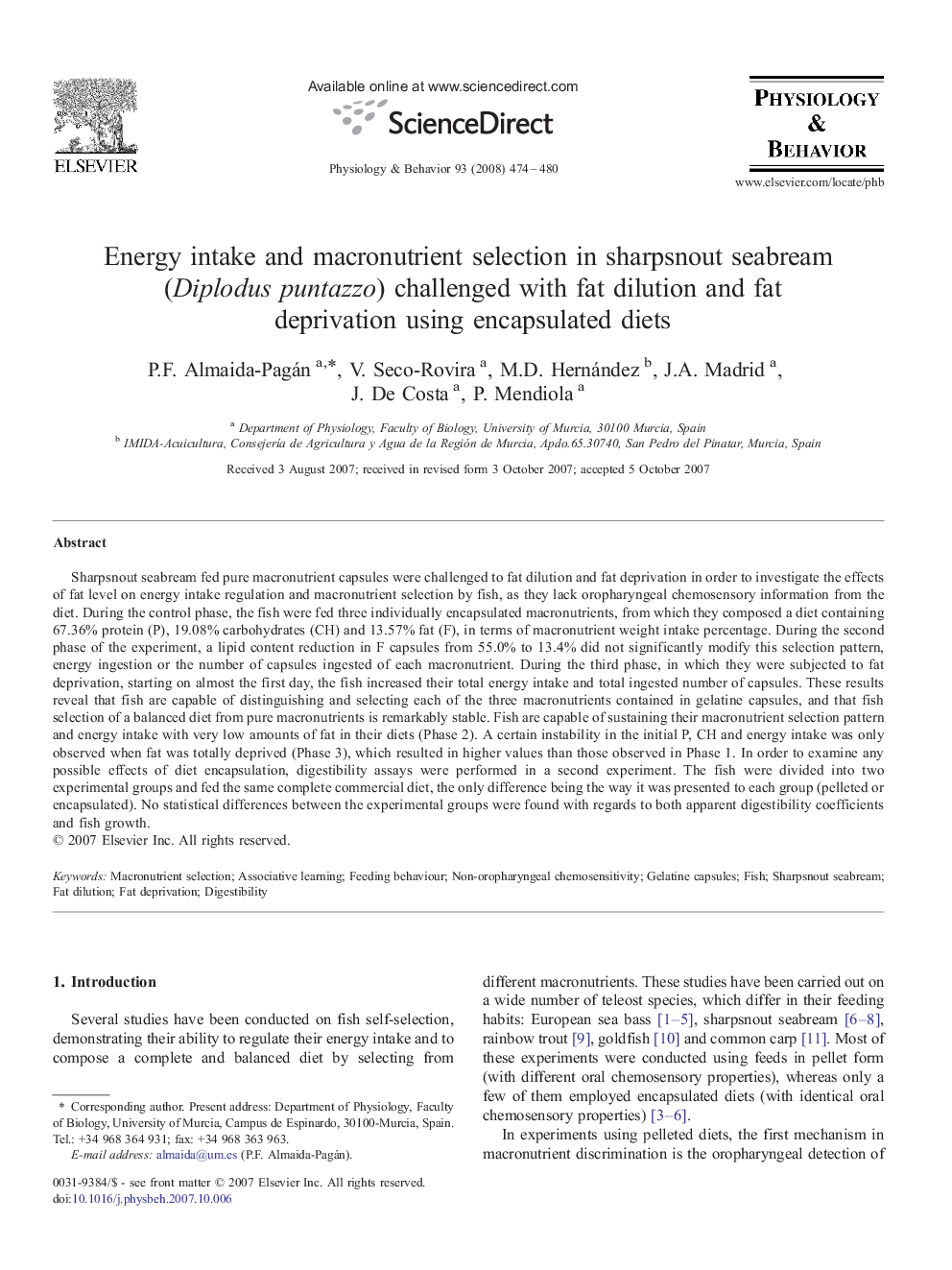| کد مقاله | کد نشریه | سال انتشار | مقاله انگلیسی | نسخه تمام متن |
|---|---|---|---|---|
| 2845682 | 1166396 | 2008 | 7 صفحه PDF | دانلود رایگان |

Sharpsnout seabream fed pure macronutrient capsules were challenged to fat dilution and fat deprivation in order to investigate the effects of fat level on energy intake regulation and macronutrient selection by fish, as they lack oropharyngeal chemosensory information from the diet. During the control phase, the fish were fed three individually encapsulated macronutrients, from which they composed a diet containing 67.36% protein (P), 19.08% carbohydrates (CH) and 13.57% fat (F), in terms of macronutrient weight intake percentage. During the second phase of the experiment, a lipid content reduction in F capsules from 55.0% to 13.4% did not significantly modify this selection pattern, energy ingestion or the number of capsules ingested of each macronutrient. During the third phase, in which they were subjected to fat deprivation, starting on almost the first day, the fish increased their total energy intake and total ingested number of capsules. These results reveal that fish are capable of distinguishing and selecting each of the three macronutrients contained in gelatine capsules, and that fish selection of a balanced diet from pure macronutrients is remarkably stable. Fish are capable of sustaining their macronutrient selection pattern and energy intake with very low amounts of fat in their diets (Phase 2). A certain instability in the initial P, CH and energy intake was only observed when fat was totally deprived (Phase 3), which resulted in higher values than those observed in Phase 1. In order to examine any possible effects of diet encapsulation, digestibility assays were performed in a second experiment. The fish were divided into two experimental groups and fed the same complete commercial diet, the only difference being the way it was presented to each group (pelleted or encapsulated). No statistical differences between the experimental groups were found with regards to both apparent digestibility coefficients and fish growth.
Journal: Physiology & Behavior - Volume 93, Issue 3, 27 February 2008, Pages 474–480